Tooth resorption (TR) is very common in cats and is also referred to as neck lesions, feline odontoclastic resorptive lesions (FORLs), resorptive lesions (RLs) and feline cavities. The lesions are occasionally described as feline caries or tooth decay, but the mechanisms through which they occur are very different to the caries that appear in humans.
The tooth structure is gradually destroyed by the resorptive activities of cells called odontoclasts. In the early stages, there is no discomfort but, as the process continues, the sensitive tissues in the middle of the tooth (pulp) are exposed and this causes significant pain. The cavity created often fills with red granulation tissue that can appear as a red spot on the tooth. Commonly, the gums grow over the lesion to protect it.
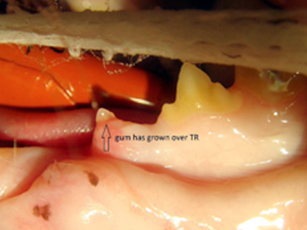
Gum covering area of resorption
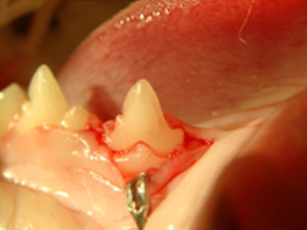
This tooth appears normal
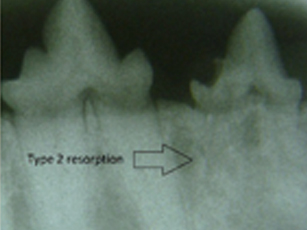
Resorption generally starts on the roots of the teeth and is, therefore, invisible without x-rays.
Tooth resorption is divided into two categories:
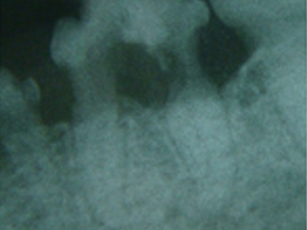
Type 1: the periodontal ligament, which attaches the tooth root to the surrounding bone, is largely intact. All root fragments must be extracted.
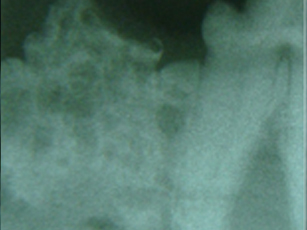
Type 2: the periodontal ligament is destroyed and the tooth root material is gradually replaced by bone. In some cases, the tooth crown can be removed and the root remnants left.
Unlike caries or dental decay, the cavities created by tooth resorption cannot be treated with fillings, as the destructive process will continue. Although various other treatments have been tested, extraction of the affected tooth is currently the only option and is necessary to prevent ongoing pain.
Type 1 lesions are caused by localised inflammation, most commonly periodontal disease, although they can also occur as a result of endodontic disease (inflammation of the pulp within the tooth).
The cause of type 2 lesions remains unknown.
Once tooth resorption has been diagnosed in an individual tooth, there is a high chance that more teeth will develop resorption. If any resorption is found, it is advisable to take x-rays of all the teeth, to check for other undetected lesions.
Although less common, dogs can also suffer from resorption.
